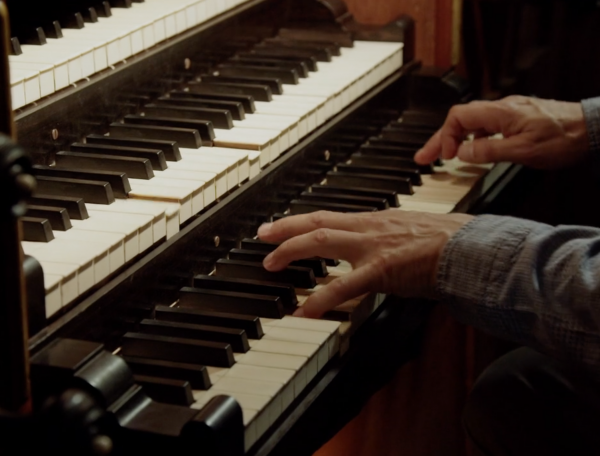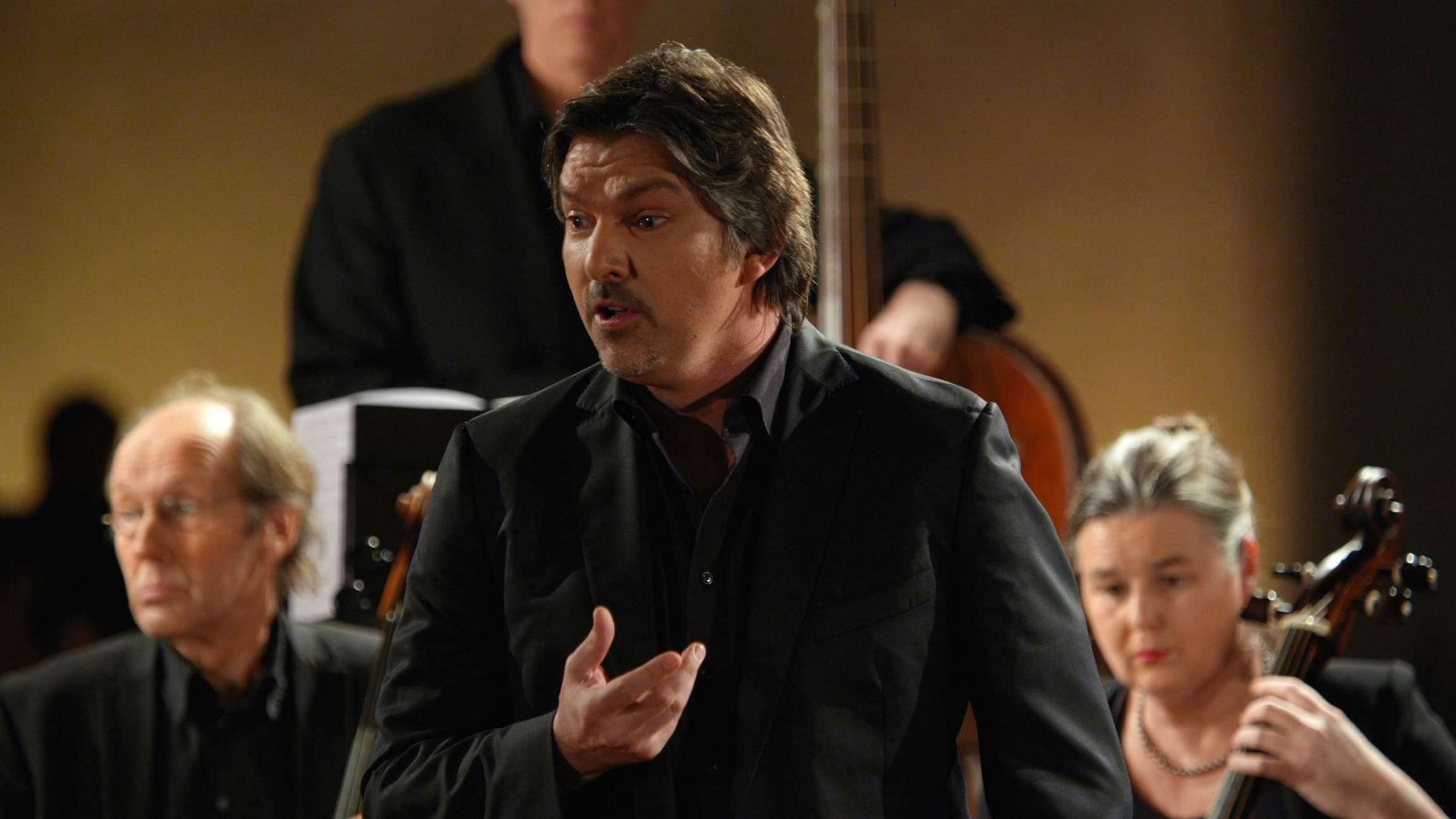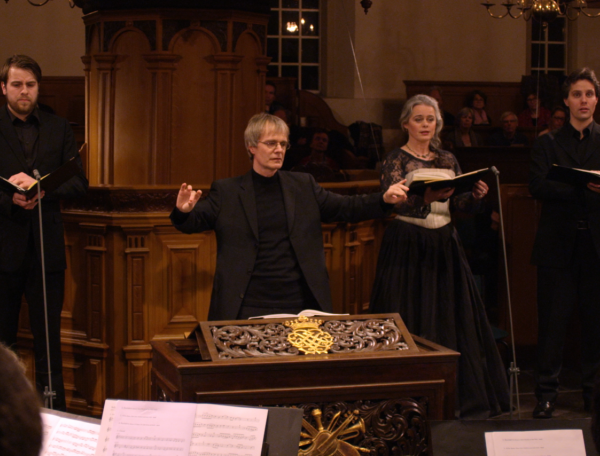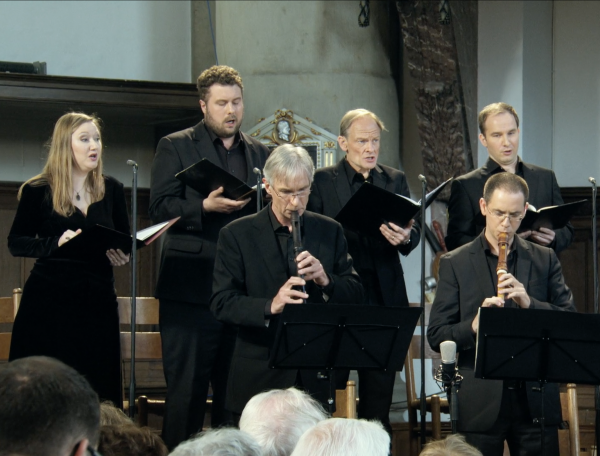

Ich habe genung
BWV 82 performed by the Netherlands Bach Society
conducted by Lars Ulrik Mortensen
Geertekerk, Utrecht
Behind the music
The lullaby for eternal sleep
Bach's work does not get much more intimate than this solo cantata
The Feast of the Purification for which it was composed commemorates the traditional purification sacrifice made by Mary forty days after the birth of Jesus. On this day, she met the old man Simeon, who immediately recognised the tiny Jesus as the Messiah and burst into a song of praise, singing ‘Now I have seen my Saviour, I can die in peace’. Simeon’s Song of Praise – also known as the Nunc Dimittis – was not only sung at the Feast of the Purification on 2 February, but was also given a regular place in the daily Mass at the close of day in monasteries. With the words of the Light of the World in mind, people could go to sleep in peace.
The way that mortality was viewed in the eighteenth century is expressed wonderfully in Ich habe genung. Death was seen as a deliverance from the earthly vale of tears, and as a chance to unite with your creator. So rather than being heart-rending, the music exudes a subdued melancholy. The first aria gives a more or less literal interpretation of Simeon’s emotions. The oboe opens with a plaintive upward leap (a minor sixth). This interval plays an important role throughout the aria.
Then comes the aria that Bach’s biographer Albert Schweitzer called ‘the lullaby for eternal sleep’: Schlummert ein, ihr matten Augen. It invites the listener to slip away from daily cares, gently but forever. And finally, a cheerful dance rhythm celebrates the approaching end. Throughout the cantata, the contribution of the solo wind instrument is crucial. Initially plaintive, then mellow and finally full of optimistic joy, the oboe drives the bass onwards.
- BWV
- 82
- Title
- Ich habe genung
- Instrument
- bass, oboe
- Genre
- cantatas
- Year
- 1727
- City
- Leipzig
- Lyricist
- unknown
- Occasion
- the Purification (2 February)
- First performance
- 2 February 1727
- Special notes
- Arranged in 1731 for soprano and with transverse flute instead of oboe (has not survived intact), in 1735 for mezzo-soprano, in 1747 for bass or mezzo with the addition of oboe da caccia and organ. . There is also a version for organ (BWV Anh. 55) entitled Herr Christ der einig Gotts Sohn.
Extra videos
Vocal texts
Original
1. Arie (Bass)
Ich habe genung,
ich habe den Heiland,
das Hoffen der Frommen,
auf meine begierigen Arme genommen;
ich habe genung!
Ich hab ihn erblickt,
Mein Glaube hat Jesum ans Herze gedrückt;
nun wünsch ich, noch heute mit Freuden
von hinnen zu scheiden.
Ich habe genung!
2. Rezitativ (Bass)
Ich habe genung!
Mein Trost ist nur allein,
dass Jesus mein
und ich sein eigen möchte sein.
Im Glauben halt ich ihn,
da seh ich auch mit Simeon
die Freude jenes Lebens schon.
Lasst uns mit diesem Manne ziehn!
Ach! möchte mich von meines Leibes Ketten
der Herr erretten;
ach! wäre doch mein Abschied hier,
mit Freuden sagt ich, Welt, zu dir:
ich habe genung!
3. Arie (Bass)
Schlummert ein, ihr matten Augen,
fallet sanft und selig zu!
Welt, ich bleibe nicht mehr hier,
hab ich doch kein Teil an dir,
das der Seele könnte taugen.
Hier muss ich das Elend bauen,
aber dort, dort werd ich schauen
süssen Frieden, stille Ruh.
4. Rezitativ (Bass)
Mein Gott! wenn kömmt das schöne: Nun!
Da ich im Friede fahren werde
und in dem Sande kühler Erde
und dort bei dir im Schosse ruhn?
Der Abschied ist gemacht,
Welt, gute Nacht!
5. Arie (Bass)
Ich freue mich auf meinen Tod,
ach, hätt’ er sich schon eingefunden.
Da entkomm ich aller Not,
die mich noch auf der Welt gebunden.
Translation
1. Aria (Bass)
I have enough;
I have taken the savior,
the hope of the pious,
Into my eager arms;
I have enough.
I have beheld him;
My faith has pressed Jesus to my heart;
Now I wish, with joy, this very day
To depart from here:
I have enough.
2. Recitative (Bass)
I have enough.
My one and only consolation is
That Jesus would be my own
and I his.
I hold him in faith;
Thus, with Simeon, I, too, already see
The joy of that life [in heaven].
Let us go with this man [Jesus, to die].
Ah, that from my body’s chains
The Lord would rescue me;
Ah, were indeed my leave-taking here,
I would say with joy to you, world:
I have enough.
3. Aria (Bass)
Fall into [death’s] slumber, you languid eyes,
Droop gently and blissfully shut.
World, I will remain here no longer;
I have indeed no share in you
That could be fit for my soul.
Here [on earth] I must build up misery,
But there [in heaven], there I will look upon
Sweet peace, quiet rest.
4. Recitative (Bass)
My God, when will the beautiful “Now” come,
When I will go in peace,
And rest [here] in the sand of the cold earth
And there with you in the bosom [of Abraham—heaven]? I have taken my leave:
World, good night.
5. Aria (Bass)
I look forward to my death;
Ah, had it already come about.
Then I will escape all the distress
That [had] bound me yet in the world.
transl. © Daniel R. Melamed and Michael Marissen
For the annotated version of the text and translation, see here.
Credits
-
- Release date
- 2 May 2014
-
- Recording date
- 1 February 2014
-
- Location
- Geertekerk, Utrecht
-
- Harpsichord and direction
- Lars Ulrik Mortensen
-
- Bass
- Thomas Bauer
-
- Violin 1
- Shunske Sato, Sayuri Yamagata, Anneke van Haaften
-
- Violin 2
- Pieter Affourtit, Paulien Kostense, Annelies van der Vegt
-
- Viola
- Staas Swierstra, Femke Huizinga
-
- Cello
- Lucia Swarts, Richte van der Meer
-
- Double bass
- Robert Franenberg
-
- Oboe
- Martin Stadler
-
- Positive organ
- Siebe Henstra
-
- Concert production
- Marco Meijdam, Imke Deters
-
- Producer
- Frank van der Weij
-
- Film director
- Lucas van Woerkum
-
- Director of photography
- Sal Kroonenberg
-
- Camera
- Robert Berger, Jorrit Garretsen, Benjamin Sparschuh
-
- Film editor
- Lucas van Woerkum & Frank van der Weij
-
- Music recording producer
- Leo de Klerk
-
- Gaffer
- Roel Ypma
-
- Best boy
- Chris Uitenwijk
-
- Production assistant
- Zoë de Wilde
-
- Score reader
- Jan Van den Bossche
-
- Make up
- Marloes Bovenlander, Jamila el Bouch
-
- Trainees camera
- Izak de Dreu, Indy Hamid
-
- Music producer's assistant
- Mieneke van der Velden
-
- Music recording assistants
- Jaap Firet, Gilius Kreiken, Jaap van Stenis
-
- Data handler
- Joep Bannenberg
-
- Music edit & mix
- Leo de Klerk, Frank van der Weij
-
- Music edit & mix assistant
- Martijn Snoeren
-
- Colorist
- Geert van Schoot
-
- Acknowledgements
- Rob van Stek
Discover
Help us to complete All of Bach
There are still many recordings to be made before the whole of Bach’s oeuvre is online. And we can’t complete the task without the financial support of our patrons. Please help us to complete the musical heritage of Bach, by supporting us with a donation!

